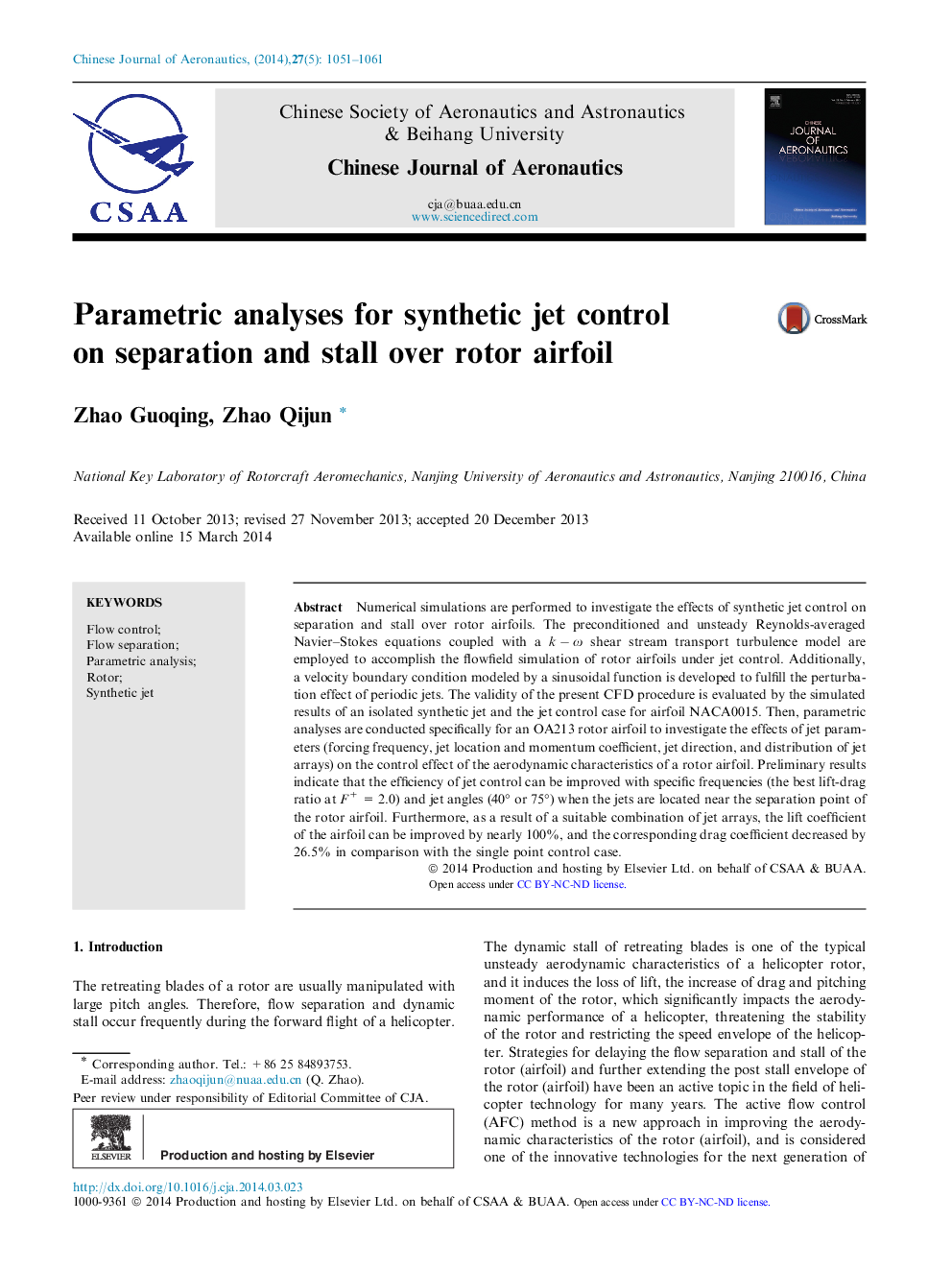| Article ID | Journal | Published Year | Pages | File Type |
|---|---|---|---|---|
| 765879 | Chinese Journal of Aeronautics | 2014 | 11 Pages |
Numerical simulations are performed to investigate the effects of synthetic jet control on separation and stall over rotor airfoils. The preconditioned and unsteady Reynolds-averaged Navier–Stokes equations coupled with a k − ω shear stream transport turbulence model are employed to accomplish the flowfield simulation of rotor airfoils under jet control. Additionally, a velocity boundary condition modeled by a sinusoidal function is developed to fulfill the perturbation effect of periodic jets. The validity of the present CFD procedure is evaluated by the simulated results of an isolated synthetic jet and the jet control case for airfoil NACA0015. Then, parametric analyses are conducted specifically for an OA213 rotor airfoil to investigate the effects of jet parameters (forcing frequency, jet location and momentum coefficient, jet direction, and distribution of jet arrays) on the control effect of the aerodynamic characteristics of a rotor airfoil. Preliminary results indicate that the efficiency of jet control can be improved with specific frequencies (the best lift-drag ratio at F+ = 2.0) and jet angles (40° or 75°) when the jets are located near the separation point of the rotor airfoil. Furthermore, as a result of a suitable combination of jet arrays, the lift coefficient of the airfoil can be improved by nearly 100%, and the corresponding drag coefficient decreased by 26.5% in comparison with the single point control case.
